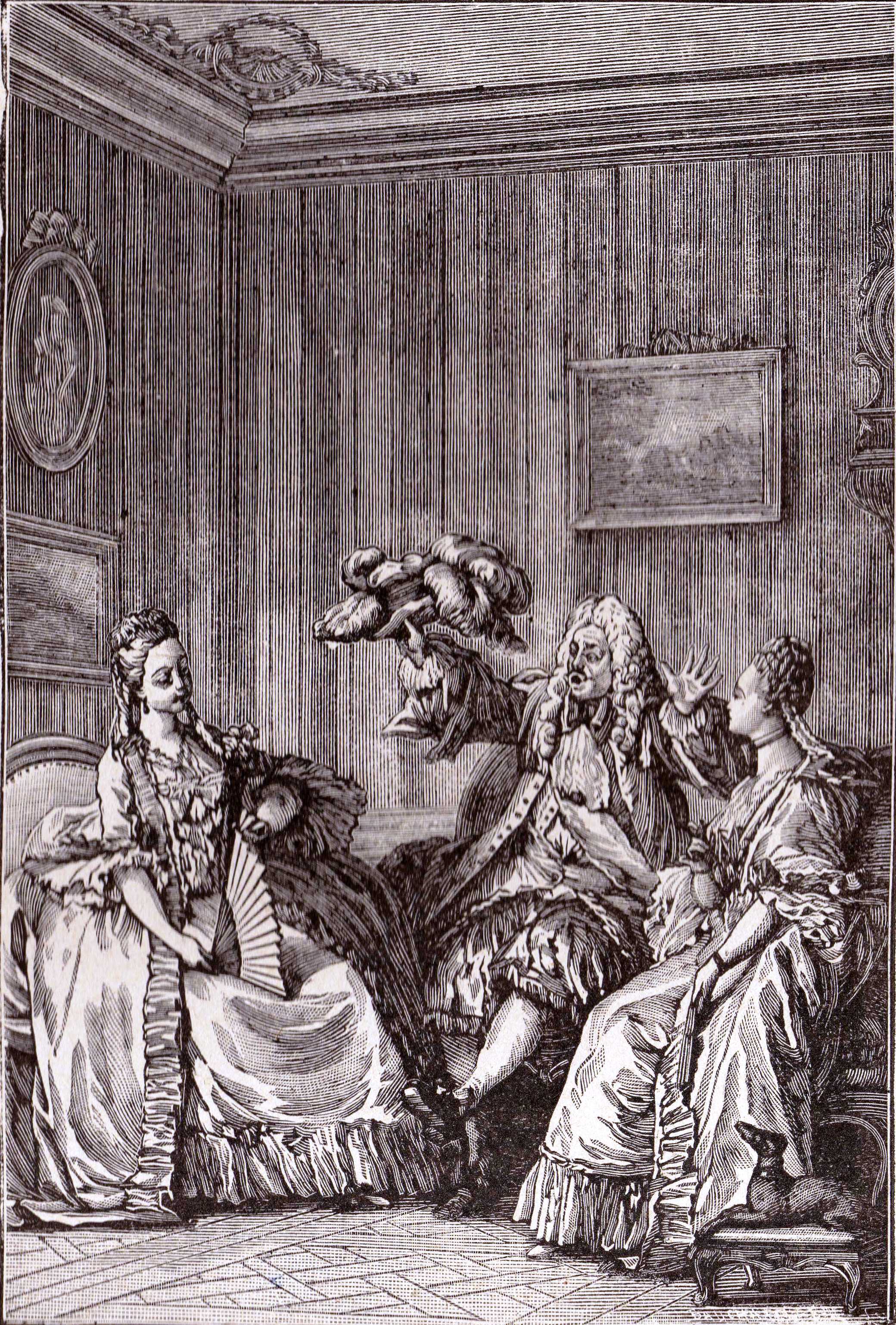The word "precious" was borrowed from the
Latin adjective: "pretosius": which has value.The precious movement
was born in France in the 17th century, and culminated particularly between
1650 and 1660. It is located during the regency after the government of Louis XIII. It was born as a challenge
to the coarseness of the court of Henry
IV where the courtesans were rude, liked salacious jokes , the unsophisticated language .
This movement is present throughout Europe, each country develops its current: in England there is euphemism , in Spain gongorism (style research, taste of images) in Italy Marinism ( hyperbola, antitheses, metaphors) All these movements seek a refined and elegant style . This movement trespasses the bounds of literature and is converted into a way of life. The main aspects of this movement are: the taste for distinction (the importance of sustained language (periphrase and metaphor, culture,elegance), the courteous love in which the woman is an idealized and inaccessible being,the art of conversation and even the questioning of marriage. Also there is the creation of neologisms like , congratulate, anonymous .
They used periphrases such as "the mirrors of the soul" to designate the eyes, a simple armchair becomes a «convenience of conversation» They oppose the too realistic term or evoke «vulgar» realities: corpse, vomit, sweep, The broom becomes «the instrument of cleanliness». The precious always seek a more elegant, refined life and distinguish themselves from the common.
What characterizes this movement in France is the development of precious salons, of a cultivated company that meets in its salons most in the district of Marais . The precious ones, as we call them the women who run these salons or also called “Hotels”. The mistresses of the living rooms often receive their guests in a room, sitting on the bed. The courtesans thus form a circle around the mistress of the house. These salons are places of entertainment ( champagne, board games, etc ) but also a cultural crossroads ( debates, poetry, readings of works ,etc). The first big and famous salon in Paris was that of the Italian Marquise of Rambouillet who in her “Blue Room” welcomes aristocrats like Mme de Lafayette , Mme de Sévigné or the poet Voiture. Another very important salon was that of Madame de Scudéry, who every Saturday brought together bourgeois .
The literary genres privilege by the precious: idealistic novel (pastoral novel that stage shepherds and shepherds who have a chaste love or heroic novel), poetry, eloquent letter or badine. The great works of this movement are, l Astrée d Honoré d Urfe ( pastoral novel) Clélie and Le Grand Cyrus ( heroic novel) by Mme de Scudéry or Correspondances de Madame de Sévigné.
This movement is present throughout Europe, each country develops its current: in England there is euphemism , in Spain gongorism (style research, taste of images) in Italy Marinism ( hyperbola, antitheses, metaphors) All these movements seek a refined and elegant style . This movement trespasses the bounds of literature and is converted into a way of life. The main aspects of this movement are: the taste for distinction (the importance of sustained language (periphrase and metaphor, culture,elegance), the courteous love in which the woman is an idealized and inaccessible being,the art of conversation and even the questioning of marriage. Also there is the creation of neologisms like , congratulate, anonymous .
They used periphrases such as "the mirrors of the soul" to designate the eyes, a simple armchair becomes a «convenience of conversation» They oppose the too realistic term or evoke «vulgar» realities: corpse, vomit, sweep, The broom becomes «the instrument of cleanliness». The precious always seek a more elegant, refined life and distinguish themselves from the common.
What characterizes this movement in France is the development of precious salons, of a cultivated company that meets in its salons most in the district of Marais . The precious ones, as we call them the women who run these salons or also called “Hotels”. The mistresses of the living rooms often receive their guests in a room, sitting on the bed. The courtesans thus form a circle around the mistress of the house. These salons are places of entertainment ( champagne, board games, etc ) but also a cultural crossroads ( debates, poetry, readings of works ,etc). The first big and famous salon in Paris was that of the Italian Marquise of Rambouillet who in her “Blue Room” welcomes aristocrats like Mme de Lafayette , Mme de Sévigné or the poet Voiture. Another very important salon was that of Madame de Scudéry, who every Saturday brought together bourgeois .
The literary genres privilege by the precious: idealistic novel (pastoral novel that stage shepherds and shepherds who have a chaste love or heroic novel), poetry, eloquent letter or badine. The great works of this movement are, l Astrée d Honoré d Urfe ( pastoral novel) Clélie and Le Grand Cyrus ( heroic novel) by Mme de Scudéry or Correspondances de Madame de Sévigné.
Nevertheless this movement was contested by great
figures of the time such as Molière, in the Précieuses ridicules ( 1659) where
he criticized the extravagance of language, clothing and manners. This movement
is very influential , it has an influence on the loving mores that become more
refined , the language also on its part becomes more refined one could say that
it anticipates the classical language but also it has brought a simplification
of the French language, even if it seems contradictory (author, reply, aisne),
and we use periphrases created in this era as for example: to have spirit, to
be confused with someone and the place of the woman in the intellectual life,
they are rather interested in novels and poetry, they judge and write literary
works.


Les précieuses ridicules of Molière

